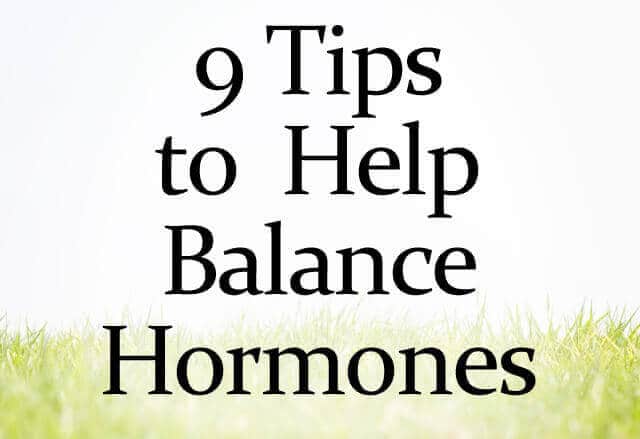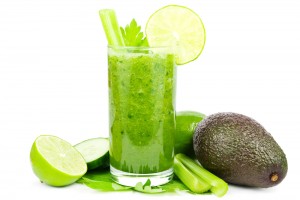 \
\What are Hormones?
Hormones are your body’s chemical messengers. They travel in your bloodstream to tissues or organs. They work slowly, over time, and affect many different processes, including
- Growth and development
- Metabolism – how your body gets energy from the foods you eat
- Sexual function
- Reproduction
- Mood
Endocrine glands, which are special groups of cells, make hormones. The major endocrine glands are the pituitary, pineal, thymus, thyroid, adrenal glands and pancreas. In addition, men produce hormones in their testes and women produce them in their ovaries. (source)
Hormones are produced using good fats and cholesterol, so lack of these important dietary factors can cause hormone problems simply because the body doesn’t have the building blocks to make them. Toxins containing chemicals that mimic these building blocks or that mimic the hormones themselves are also problematic because the body can attempt to create hormones using the wrong building blocks… mutant estrogen anyone?
The endocrine system is a complex system that we will probably never completely understand, but there are some basic things you can do to boost your body’s ability to create and balance hormones:
1. Avoid High Omega-6 Polyunsaturated Fats
I’ve talked about this before, but the body is simply not meant to consume these man-made fats found in vegetable oils. From that article:
“The human body is about 97% saturated and monounsaturated fat, with only 3% Polyunsaturated fats. Half of that three percent is Omega-3 fats, and that balance needs to be there. Vegetable oils contain very high levels of polyunsaturated fats, and these oils have replaced many of the saturated fats in our diets since the 1950s.The body needs fats for rebuilding cells and hormone production, but it has to use the building blocks we give it. When we give it a high concentration of polyunsaturated fats instead of the ratios it needs, it has no choice but to incorporate these fats into our cells during cell repair and creation.The problem is that polyunsaturated fats are highly unstable and oxidize easily in the body (if they haven’t already oxidized during processing or by light exposure while sitting on the grocery store shelf). These oxidized fats cause inflammation and mutation in cells.In arterial cells, these mutations cause inflammation that can clog arteries. When these fats are incorporated into skin cells, their mutation causes skin cancer. (This is why people often get the most dangerous forms of skin cancer in places where they are never exposed to the sun, but that is a topic for another day!)When these oils are incorporated into cells in reproductive tissue, some evidence suggests that this can spur problems like endometriosis and PCOS. In short, the body is made up of saturated and monounsaturated fats, and it needs these for optimal health.”
Bottom line: Don’t eat fats like Vegetable oil, peanut oil, canola oil, soybean oil, margarine, shortening, or other chemically altered fats. Choose fats like coconut oil, real butter, olive oil (don’t heat!) and animal fats (tallow, lard) from healthy sources instead and eat lots of high Omega-3 fish.
2. Limit the Caffeine
I love coffee, a lot, but the truth is that too much caffeine can wreak havoc on the endocrine system, especially if there are other hormone stressors involved too like pregnancy, presence of toxins, beneficial fat imbalance or stress.
Cut down the coffee if you can, or replace with beneficial herbal teas (here are my ten favorite DIY recipes). If you can’t or won’t cut the coffee, use it as a way to sneak in your beneficial fats by adding 1 tablespoon coconut oil to each cup and blending in the blender to emulsify. It is like a latte but with healthy fats! Here is the recipe I use and the only way I drink coffee.
3. Avoid Toxins
Toxins found in pesticides, plastics, household chemicals, and even mattresses can contain hormone disrupting chemicals that mimic hormones in the body and keep the body from producing real hormones. Things like hormonal birth control can (obviously) do the same thing.
If you have hormone imbalance or are struggling to get pregnant, avoiding these toxins is very important! Cook in glass or non-coated metal pans (no non-stick or teflon!) and avoid heating or storing foods in plastic. Find organic produce and meat whenever possible and don’t use chemical pesticides or cleaners. There are recipes for natural cleaners on this page.
Here are some additional tips for avoiding toxins:
- Improving indoor air quality with plants
- 3 Simple Natural Indoor Air Cleaners
- 19 Natural cleaning tips
- Best water filter options
4. SLEEP
Can’t emphasize this one enough (tried with the all-caps-yelling though)! If you aren’t getting enough sleep, your hormone will not be balanced. Period.
Use these tips to help improve your sleep and just do it! This can singlehandedly improve hormones and is even linked to longer life, less chance of disease and optimizing weight.
More Info:
5. Supplement Wisely
In a perfect world, we would be rising and sleeping with the sun, getting Vitamin D from the sun and Magnesium from the ocean while relaxing and exercising in great balance each day in a stress-free world. Since I doubt that describes any of us currently, supplements can fill in the gaps. I’ve talked about the basic supplements that I takebefore, but there are some specific ones that are helpful for hormone support.
- Maca- A tuber in the radish family that has a history of boosting hormone production and libido. Many women notice less PMS, increased fertility, and improved skin while men notice increased sperm production, libido, and better sleep. Maca is also high in minerals and essential fatty acids, making it great for hormones. It is available in powder form (least expensive option) or in capsules.
- Magnesium- Magnesium supports hundreds of reactions in the body and often contributes to better sleep (which is great for hormones!). There are several effective forms of Magnesium: In powder form with a product like Natural Calm so that you can vary your dose and work up slowly, ionic liquid form can be added to food and drinks and dose can be worked up slowly,or transdermal form by using Magnesium oil applied to skin. This is often the most effective option for those with damaged digestive tract or severe deficiency.
- Vitamin D- A pre-hormone is supportive of hormone function. Best obtained from the sun if possible, or from a D3 supplement or Fermented Cod Liver Oil.
- Fermented Cod Liver Oil- Provides many of the necessary building blocks for hormone production including Vitamins A, D, and K. It also is a great source of Omega-3s and beneficial fats.
- Gelatin is a great source of calcium, magnesium and phosphate. It supports hormone production and digestive health and helps sooth inflammation, especially in joints. We use Great Lakes Kosher as I was able to verify with the company that it is sourced from grass-fed, humanely raised cows, and as such is higher in nutrients.
6. Exercise Lightly
If you have hormone imbalance, intense extended exercise can actually make the problem worse in the short term. Sleep is actually more important, at least during the balancing phase, so focus on relaxing exercises like walking or swimming and avoid the extended running, cardio, and exercise videos, for now….
I’ve also recently added in Rebounding, which is great exercise and has additional health benefits.
7. Lift Heavy Weights
While extended cardio can be bad, short bursts of heavy lifting (kettlebells, deadlifts, squats, lunges) can be beneficial since they trigger a cascade of beneficial hormone reactions. Aim for a few sets (5-7) at a weight that really challenges you, but make sure to get help with form and training if you haven’t done these before as bad form can be harmful!
8. Eat Some Coconut Oil
Coconut Oil is amazing for hormone health. It provides the necessary building blocks for hormone production, can assist weight loss, reduce inflammation, and even has antimicrobial and antibacterial properties.
If you really need hormone help, aim to consume 1/4 cup of added coconut oil a day. My favorite way is to blend into coffee or tea. This is the highest quality one I’ve found.
9. Fix Your Leptin
Leptin is a master hormone, and if it is out of balance or if you are resistant to it, no other hormones will balance well. Fixing leptin will also help boost fertility, make weight loss easier, improve sleep, and lower inflammation.
Found this information @: http://wellnessmama.com/5425/balance-hormones









